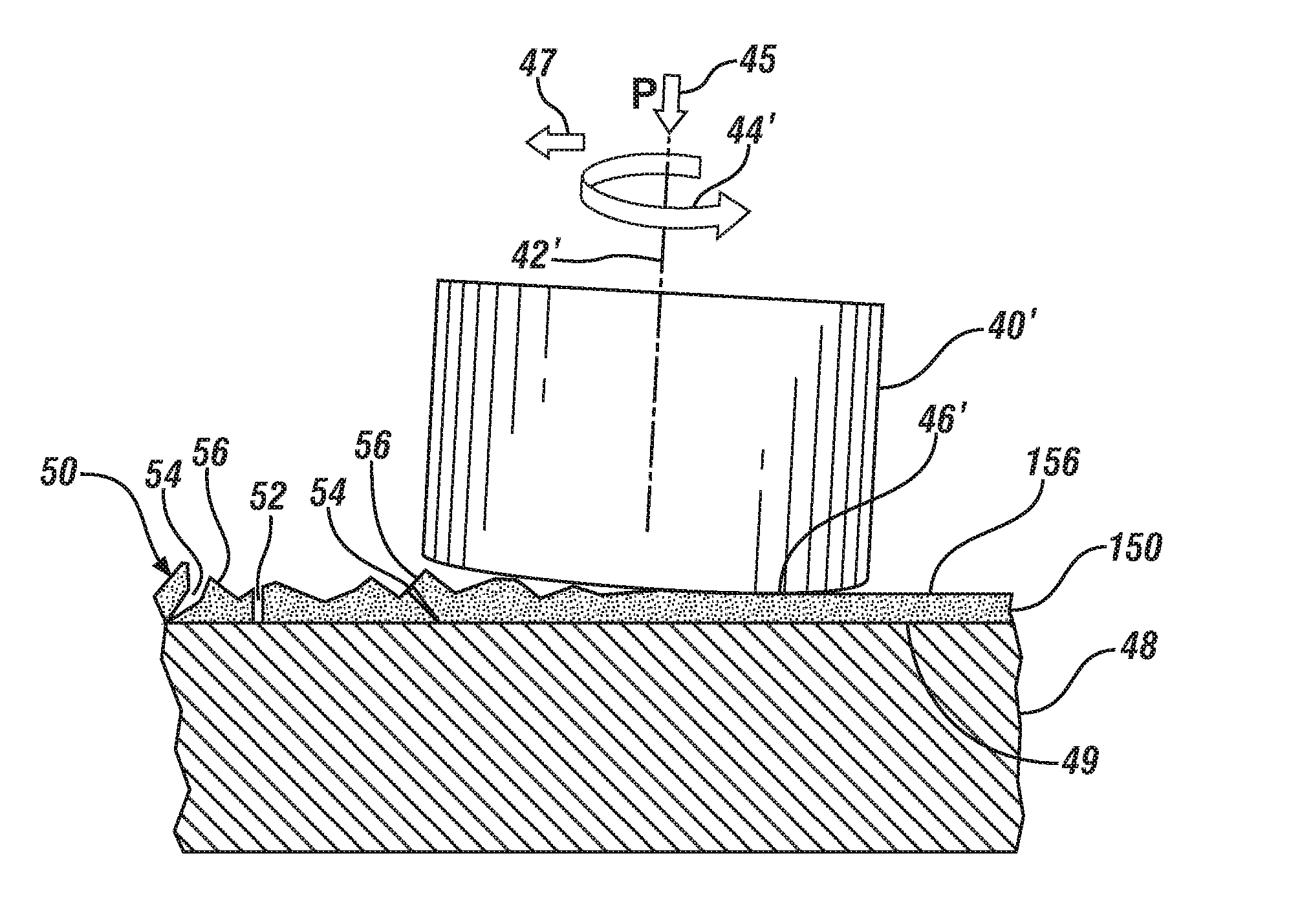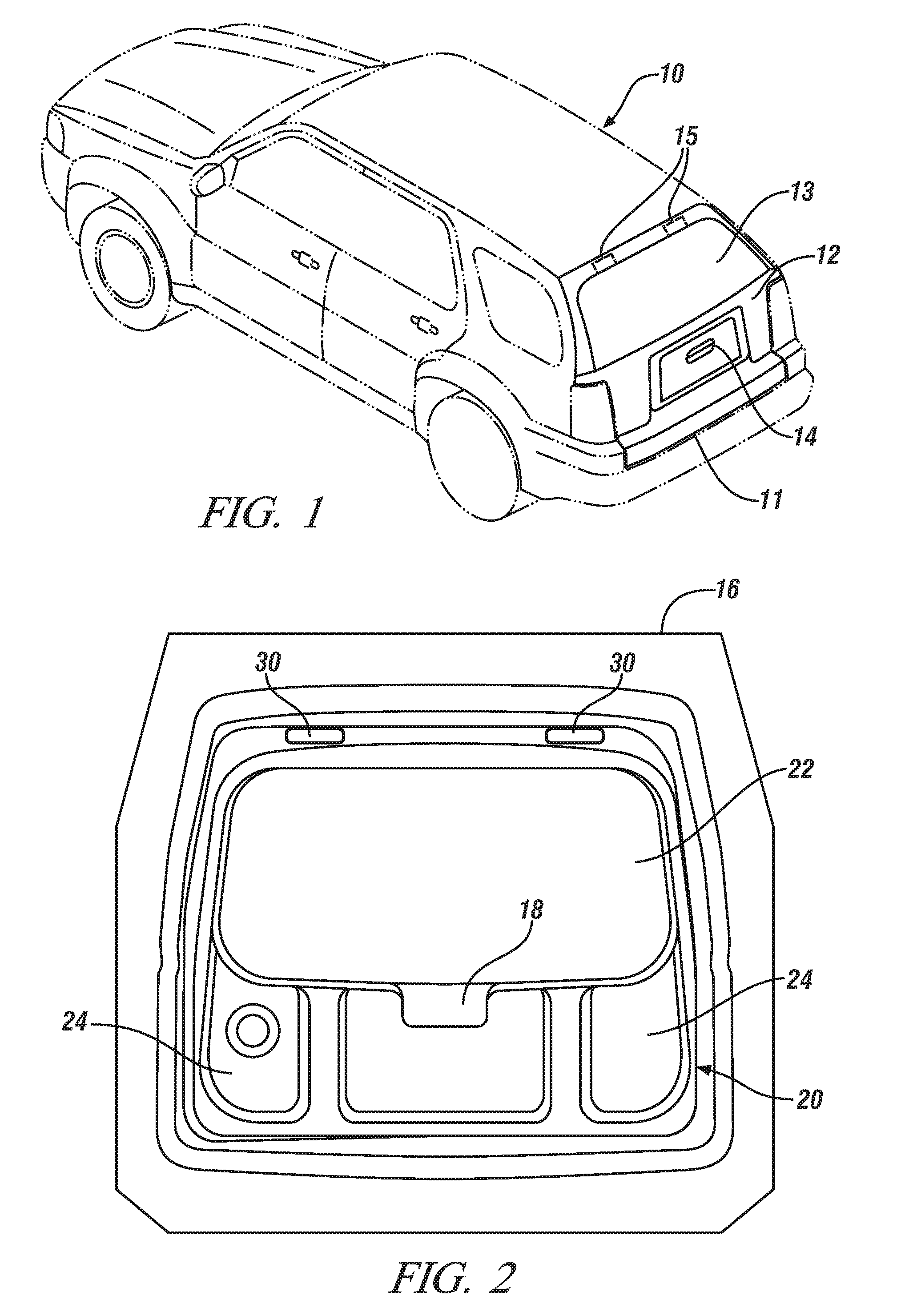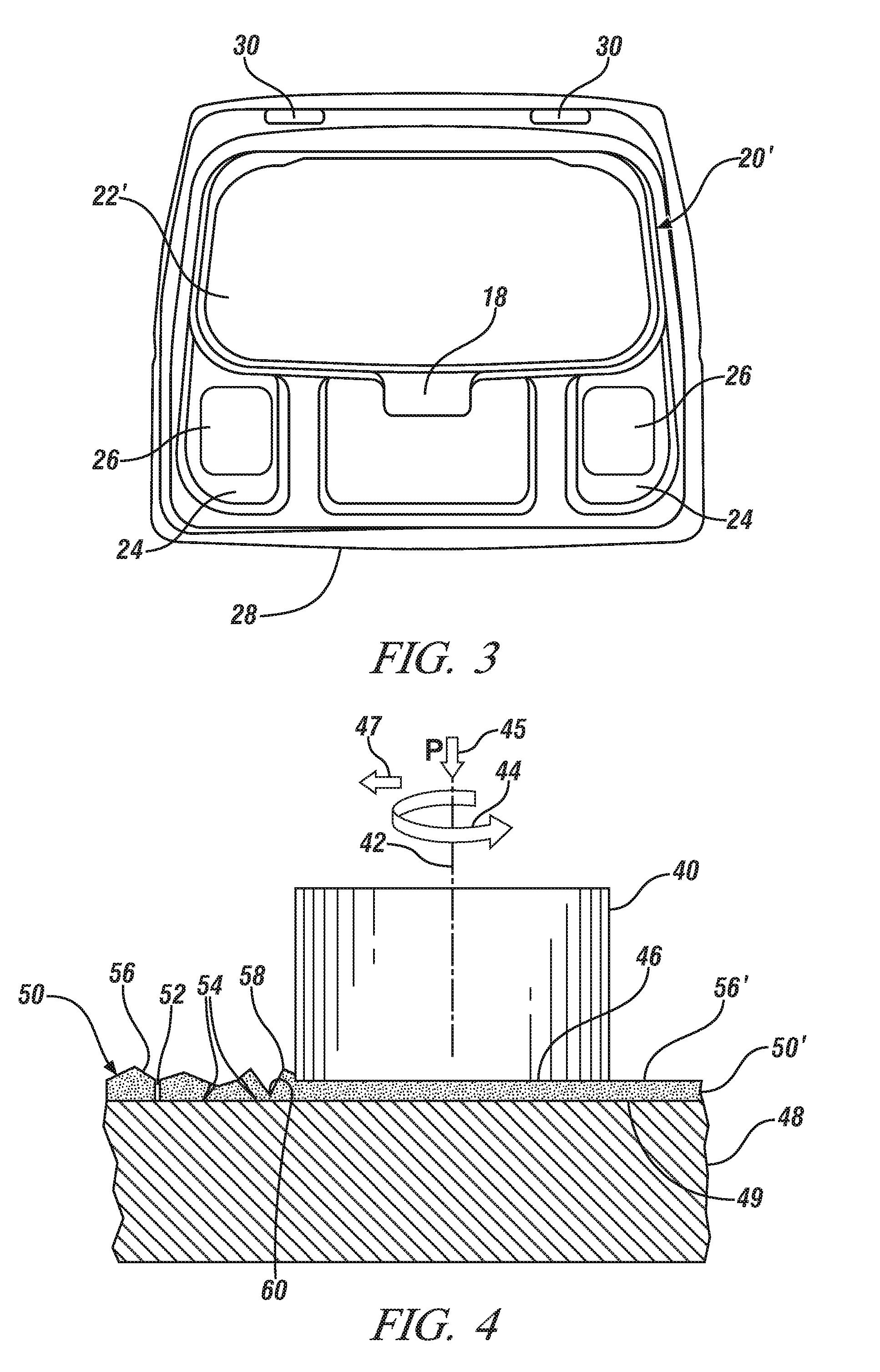Corrosion resistant magnesium article method of making
a technology of corrosion resistance and magnesium alloy, applied in the field of corrosion resistance enhancement of magnesium alloy articles, can solve the problems of limiting the choice of barrier layer materials, lack of coating on the sheared edge, and ineffective protection of surface coating at the cut or sheared edges, so as to improve corrosion performance, reduce corrosion, and improve corrosion performance.
- Summary
- Abstract
- Description
- Claims
- Application Information
AI Technical Summary
Benefits of technology
Problems solved by technology
Method used
Image
Examples
Embodiment Construction
[0031]The substitution of low density sheet magnesium alloy components for denser materials offers opportunity for mass reduction automobile bodies, particularly for closure panels such as the hood, decklid and doors. One such approach is the substitution of magnesium sheet alloy AZ31, nominally containing 3 wt. % aluminum and 1 wt. % zinc for the aluminum alloy and steel panels in current use in automobile bodies. But magnesium has low corrosion resistance and when exposed to aqueous electrolytes such as rain or road splash is prone to corrode. In addition to being susceptible to general corrosion, magnesium is susceptible to galvanic corrosion when it is placed in direct contact with a less corrodible metal in a corrosive medium such as aluminum or steel, both common constituents of automobile bodies.
[0032]An exemplary sheet metal part which may be fabricated of magnesium and exposed to rain and road splash is the liftgate 12, shown attached to an SUV (Sport Utility Vehicle)-type ...
PUM
| Property | Measurement | Unit |
|---|---|---|
| thickness | aaaaa | aaaaa |
| temperature | aaaaa | aaaaa |
| temperature | aaaaa | aaaaa |
Abstract
Description
Claims
Application Information
 Login to View More
Login to View More - R&D
- Intellectual Property
- Life Sciences
- Materials
- Tech Scout
- Unparalleled Data Quality
- Higher Quality Content
- 60% Fewer Hallucinations
Browse by: Latest US Patents, China's latest patents, Technical Efficacy Thesaurus, Application Domain, Technology Topic, Popular Technical Reports.
© 2025 PatSnap. All rights reserved.Legal|Privacy policy|Modern Slavery Act Transparency Statement|Sitemap|About US| Contact US: help@patsnap.com



